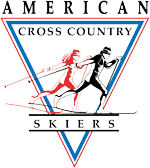Resources for
Join AXCS
The following is a translated and summarized article using a great deal of content originally appearing on the German XC web site xc-ski.de, Oct. 12, 2015. Translation and summary by Inge Scheve exclusively for AXCS ski educational public outreach projects.
Let’s take a look at what beginner skiers should focus on in terms of training and technique, and what to do in order to improve faster and easier. Basically, most novice skiers should focus on two major areas: Learning technique and improving overall fitness.
During the dryland training season, it’s a good idea to spend time on ski-specific/ ski-imitation activities, such as skiwalking with ski poles, as well as general endurance training, which improves overall fitness. Cycling, hiking, running, and paddling all can be methods used by a wide variety of beginner skiers. Better base fitness makes it easier to learn proper cross-country ski technique.
Over time, some motivated individuals may incorporate roller skiing. But realistically roller skiing is a poor match for the needs of beginner to casual skiers as they are unlikely to be able to perform necessary motions with good technique or in a safe manner.
When skiers have the basic technique down for both skate and classic skiing, they are ready to start the real work that will eventually result in skiers that are motivated enough to annually enter and prepare for ski events. Coaches and training groups can have a powerful influence on educating these newly-motivated skiers to keep developing not only their technical skills on snow, but their overall fitness profile.
Skiers just past the beginner stage are indeed ready to start paying attention to heart rates and training zones. Training group leaders should establish individual training zones based on max heart rate and lactic acid threshold, and build training plans around individual fitness levels as well as personal goals and ambitions.
So how do skiers most effectively learn technique? The most important factor regarding technique training is getting it right from the start. Engage your local audience in educational materials that urge getting a lesson from a certified or professional ski instructor or coach who can both model the correct technique and correct your form. Bad habits and incorrect form quickly become bad habits that can be hard to get rid of once they stick.
Additionally, it’s often a good idea to urge skiers to focus on one technique at a time, rather than try to master both skate and classic from the start.
For beginning skiers who have experience with inline skating or cycling, the skate technique often comes easier. Those who don’t have prior experience in those activities or similar sports, tend to have an easier time starting with classic technique.
Ski instructors and experienced coaches know exactly which drills, exercises and training methods that are best teach the correct movement patterns. Start with the simplest moves, and gradually add complexity as skiers technique improves. Once skiers have the basics down, it becomes easier to build on those skills -- often with most of the time spend on snow by themselves repeating drills established by instructors and coaches.
Also, urge skiers to seek out instructional videos and skier footage online as well as looking for clinics and training camps specific to their needs.
